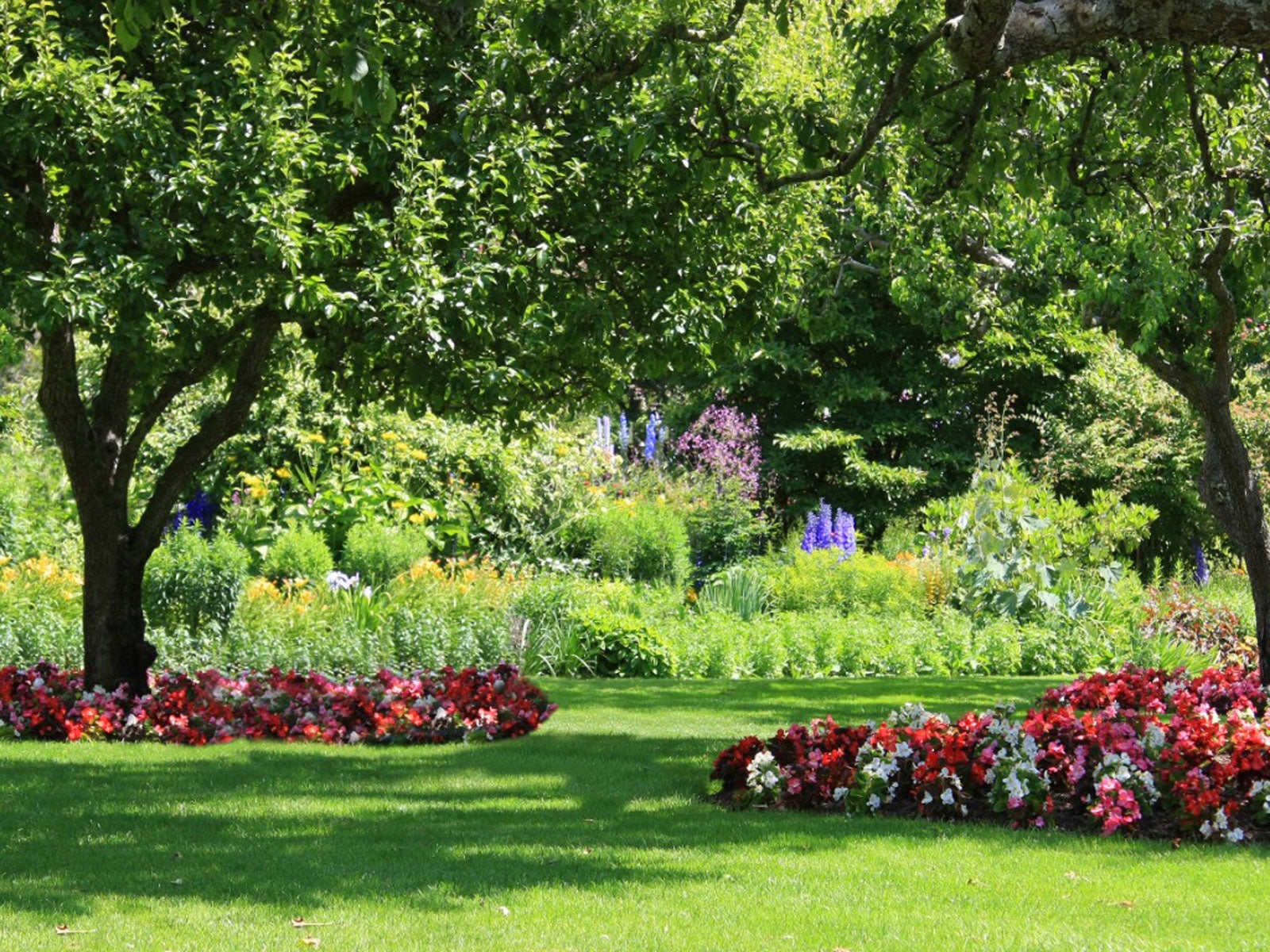Shady Island Bed Plan – How To Grow An Island Bed In The Shade


Whether you're planting a shady island bed around a tree or creating one in a shadowy section of the lawn, choosing the right plants can make all the difference. Adding vibrant colors, textures, and shapes to dimly lit areas of the yard creates visual appeal. This can breathe life into those dark corners and doing so will make the yard feel larger. It's not magic. Creating this illusion centers around picking the best shade plants for island beds.
Planning an Island Bed in the Shade
Before heading to your favorite nursery for a fun day of plant shopping, take a few minutes to create a shady island bed plan. This is a simple drawing that reflects the size of the island bed as well as the number and spacing of the plants.
If you're having trouble translating how the sketch will actually look in the yard, try using white rope to outline the shape of the bed on the ground. You can place empty flowerpots where the plants will go. In lieu of a drawing, you can also use your cell phone to photograph your layout.
When making your island bed plan, remember freestanding gardens are viewed from all sides. Place taller plants in the center and shorter plants around the edges. If the bed is large, adding a walkway will make weeding and mulching easier. Consider adding a dwarf tree, blooming shrub, or a garden décor item as a focal point.
Tips for Planting a Shady Island Bed
Now the fun begins! It's time to shop for those special plants to brighten up your island bed. When selecting shade plants for island beds, keep the following suggestions in mind:
- Growing conditions: Even though your plants will be selected primarily for their shade loving attributes, also consider similar soil preferences, pH, and optimal moisture levels.
- Textures, colors, and bloom times: Using a variety of plants adds texture and color to the island bed. Try choosing edging plants with interesting foliage as these plants are the most visible. Select flower colors that are harmonious, especially those which bloom simultaneously. For season wide color, choose plants with different bloom times.
- Plant in drifts: Arrange plants in groups of three or more and alternate the groups throughout the flowerbed. Avoid encircling the edge of the flowerbed with the same plant. Instead, use a mix of shorter and mid-sized edging plants or alternate colors and textures.
- Tie it together: Choose edging plants with shorter or finer foliage to visually transition the lawn to the flowerbed. Also, consider adding one or more species of plants from other flowerbeds. This establishes continuity between the island bed and the rest of the landscaping.
Selecting Shade Plants for Island Beds
Not sure which plants will flourish in your island bed in the shade? Check the plant tag for light requirements. Partial shade refers to areas that receive less than six hours of direct light per day, while full shade means no direct sunlight.
Here are some shade-tolerant options when making your plant selections:
Sign up for the Gardening Know How newsletter today and receive a free copy of our e-book "How to Grow Delicious Tomatoes".
Partial Shade-Tolerant Annuals
Partial Shade-Tolerant Perennials
Shade-Loving Annuals
Shade-Loving Perennials

Laura Miller has been gardening all her life. Holding a degree in Biology, Nutrition, and Agriculture, Laura's area of expertise is vegetables, herbs, and all things edible. She lives in Ohio.